Crafting an efficient organizational structure of a coffee shop lays the foundation for its success. This framework defines roles, establishes hierarchies, and streamlines operations. By delineating responsibilities clearly, from baristas to managers, you create a cohesive team that delivers exceptional customer experiences.
This guide will walk you through the essential steps of designing an organizational structure tailored to your coffee shop's unique needs. Whether it's a quaint corner cafe or a bustling urban java joint, this blueprint will pave the way for seamless operations and satisfied patrons.
Contents of this article
Part 1. Overview of Coffee Shop Org Chart
The org chart is like a map showing who does what in your coffee shop. It lays out roles from baristas to managers, clarifying who reports to whom. This tool helps everyone understand their job and who to talk to. In this section, we'll break down the essential elements of a coffee shop org chart, giving you a clear blueprint for a smooth-running cafe.
In the following sections, we'll dive deeper into creating a customized org chart tailored to your coffee shop's specific needs, setting you up for operational excellence.
Part 2. Components in the Organizational Structure of a Coffee Shop
The organizational structure of a coffee shop is like a well-tuned symphony, where each component plays a crucial role in creating a harmonious experience for both staff and customers. Here are the five major components that form the backbone of a thriving coffee shop operation:
1. Owner/Management: At the top of the hierarchy is the owner or management team. They make high-level decisions, set the overall direction, and oversee the entire operation.
2. Managerial Staff: This includes positions like General Manager, Assistant Manager, and Shift Supervisors. They handle day-to-day operations, staff scheduling, inventory management, and customer service.
3.Baristas and Service Staff: These are the front-line employees who interact directly with customers. They take orders, prepare beverages, handle transactions, and maintain a welcoming atmosphere.
4. Kitchen and Support Staff: This category encompasses roles like chefs, cooks, dishwashers, and cleaning staff. They ensure the kitchen runs smoothly, food is prepared efficiently, and the cafe is kept clean and organized.
5. Administrative and Support Roles: This group includes positions such as administrative assistants, bookkeepers, and maintenance staff. They handle administrative tasks, financial records, and maintenance duties to keep the business running smoothly.
These components work together to create a well-functioning coffee shop, each playing a crucial role in its overall success.
Part 3. Example of Cafe Organizational Structure.
Let's explore two examples of cafe organizational structures, tailored to suit different scales of operation. From small, intimate setups to mid-sized establishments, each presents a unique blueprint for success:
#1 Small-Sized Coffee Shop:
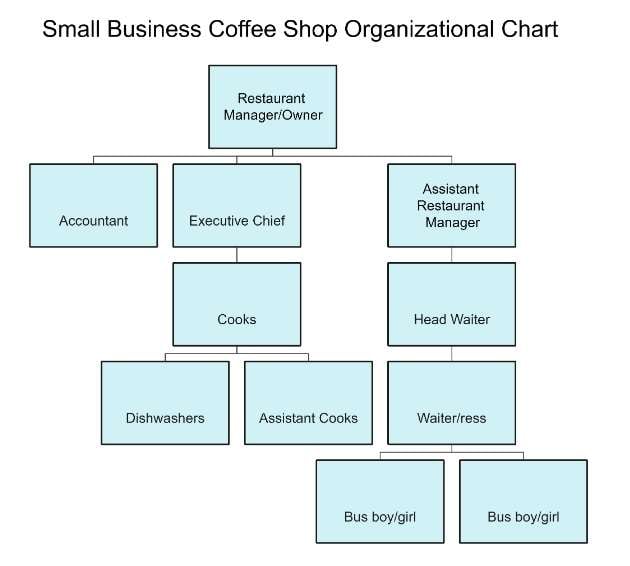
In a small-sized coffee shop, simplicity is key. Typically operated by a handful of dedicated staff, the owner often takes on multiple roles. Baristas handle customer service, while a manager oversees day-to-day operations. With a compact team, communication flows seamlessly, allowing for personalized service and a cozy atmosphere.
#2 Mid-Sized Coffee Shop:
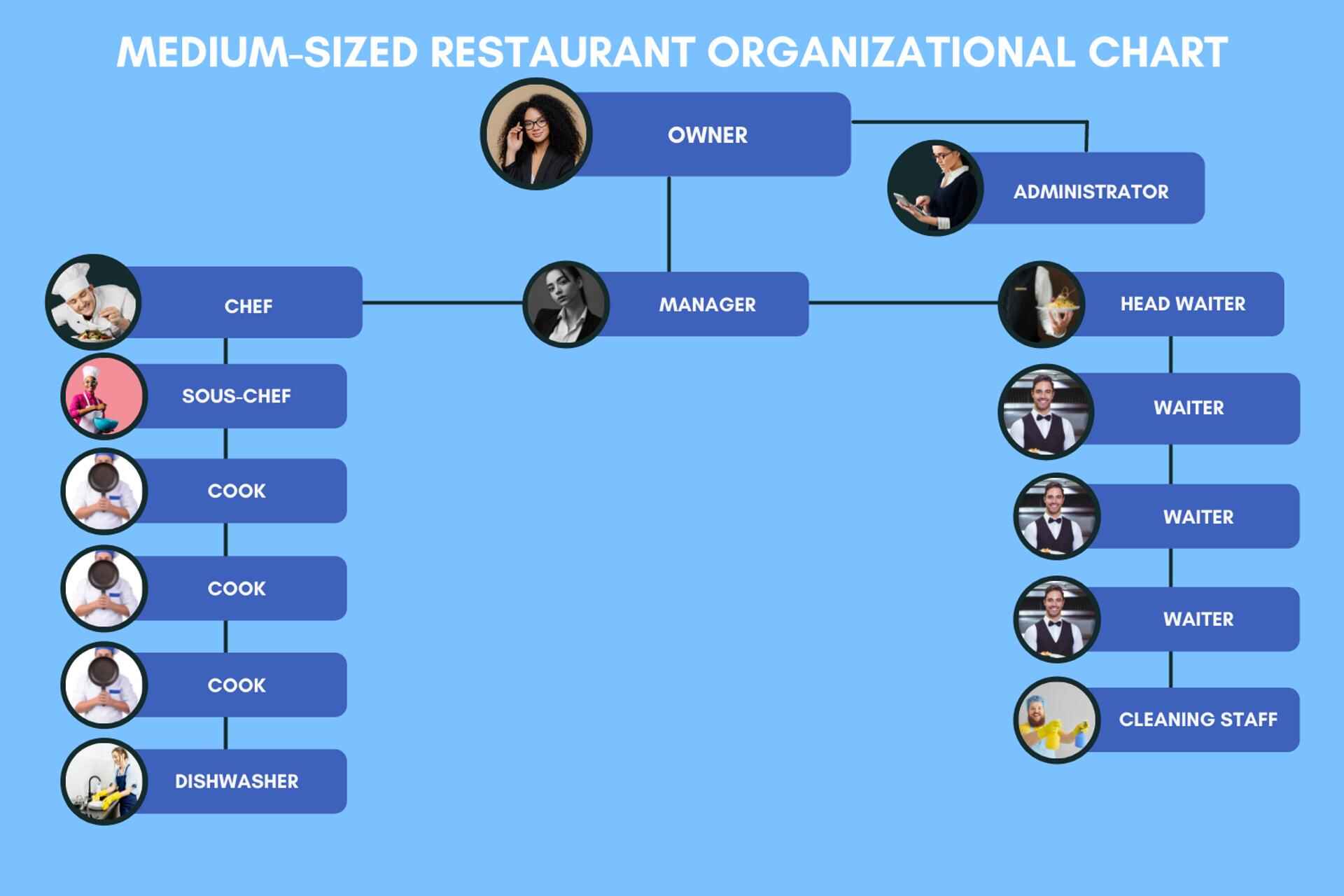
In a mid-sized coffee shop, the structure becomes more defined. The owner focuses on strategic decisions, while managers handle specific areas like operations, finances, and customer service. Baristas and kitchen staff work closely, ensuring efficient service. With a moderate staff size, this setup allows for a wider range of offerings and a balance between personalized attention and operational efficiency.
Part4. Which Factors Influence the Organizational Structure?
Several key factors shape the organizational structure of a coffee shop, tailoring it to specific needs and capacities. Here are some key considerations:
#1 Size of the Business:
The size of the coffee shop directly impacts its structure. Small shops may have a simpler setup, while larger ones require a more complex hierarchy.
#2 Number of Staff:
The workforce size dictates the need for clear roles and supervision. Smaller teams may have flatter structures, while larger ones necessitate more defined positions.
#3 Scope of Services:
A coffee shop offering a wide range of services, such as catering or event hosting, may require additional departments and roles to manage these functions.
#4 Target Market and Customer Base:
The preferences and demands of the target market influence the need for specialized roles. For instance, a shop catering to tech-savvy customers may require a dedicated IT or digital marketing department.
#5 Geographic Locations:
If a coffee shop operates in multiple locations, a decentralized structure with regional managers might be necessary for efficient oversight.
Part 5. Create an Organizational Structure of a Coffee Shop Using EdrawMax
Creating an organizational structure of coffee shop using Wondershare EdrawMax is like drawing a clear roadmap for your business. It's important because it helps everyone understand their roles and who they report to.
EdrawMax makes this process easy by providing user-friendly tools and templates. Plus, if your coffee shop grows or you need to make changes, EdrawMax lets you adjust the structure without any hassle. This flexibility is crucial for keeping up with the fast-paced coffee industry and ensuring your business stays successful in the long run.
Here are the steps to create an organizational structure for a coffee shop using EdrawMax:
Step 1: Launch EdrawMax and navigate to File> New> Organizational Chart category. Choose a template that suits the size and complexity of your coffee shop.
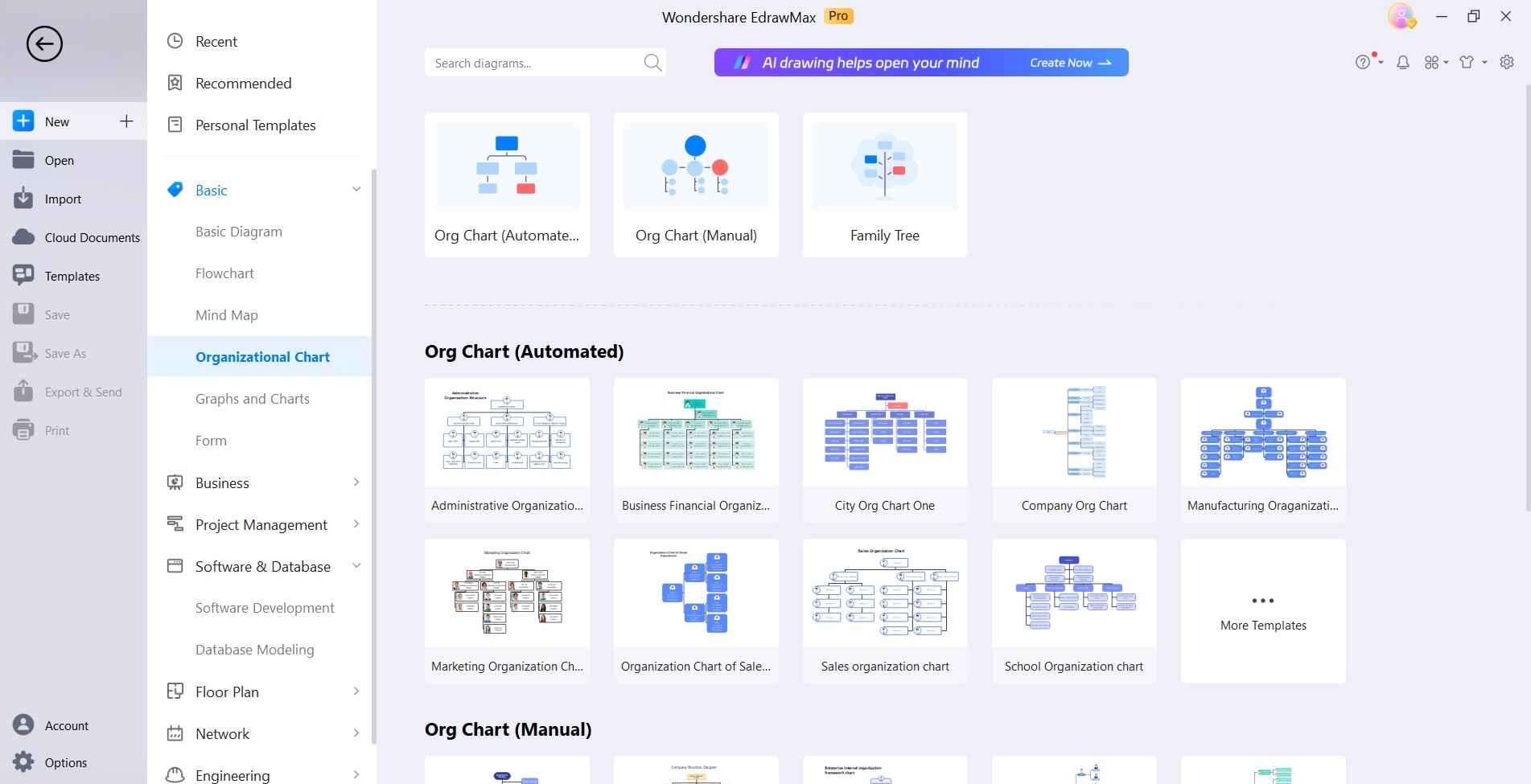
Step 2: Drag and drop shapes to represent different positions in your coffee shop, such as Owner, Manager, Barista, etc. Customize each shape by adding names and titles.
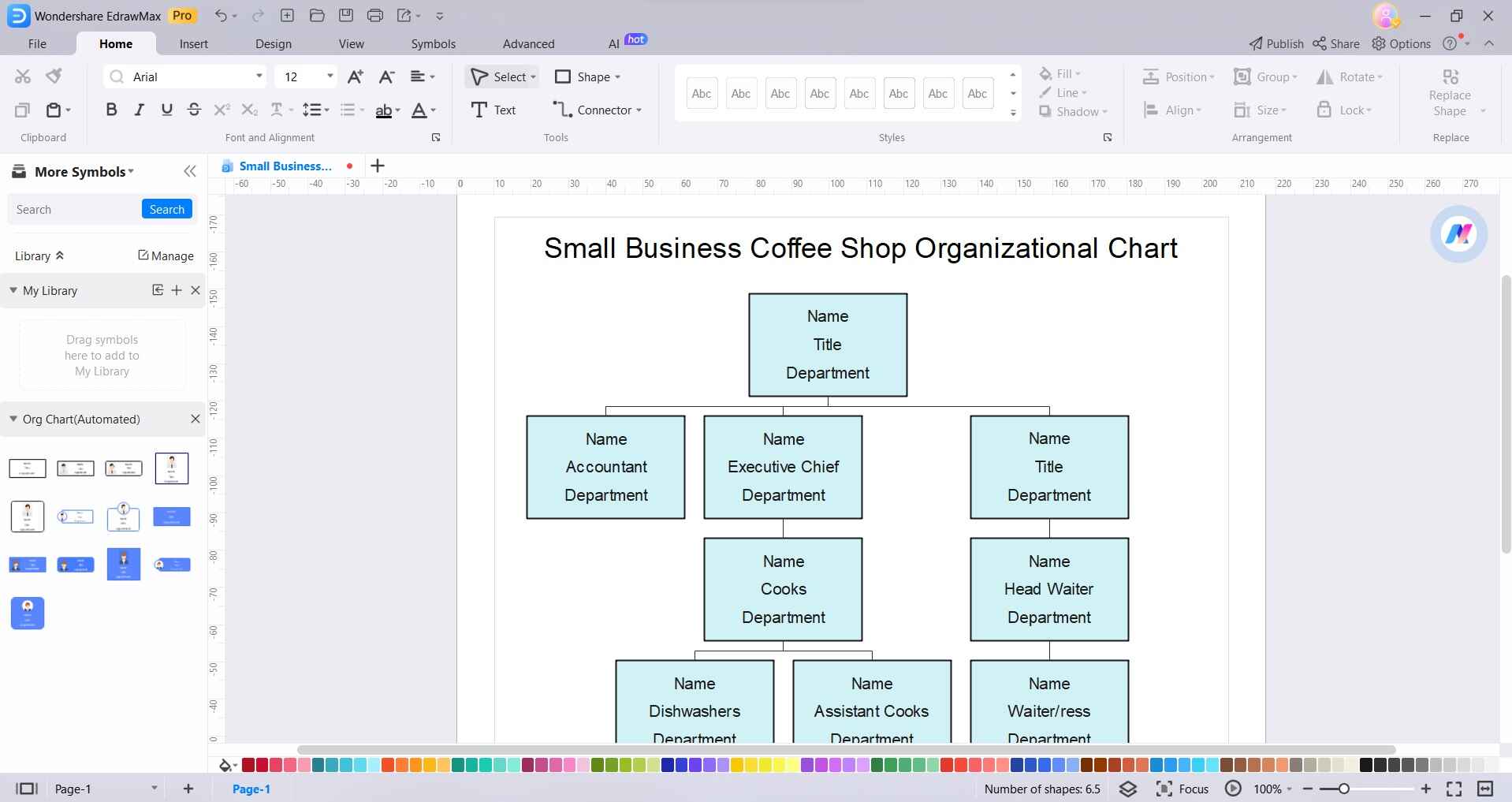
Step 3: Use connecting lines to show the reporting relationships. Ensure that the lines connect from higher positions to lower positions to indicate the chain of command.
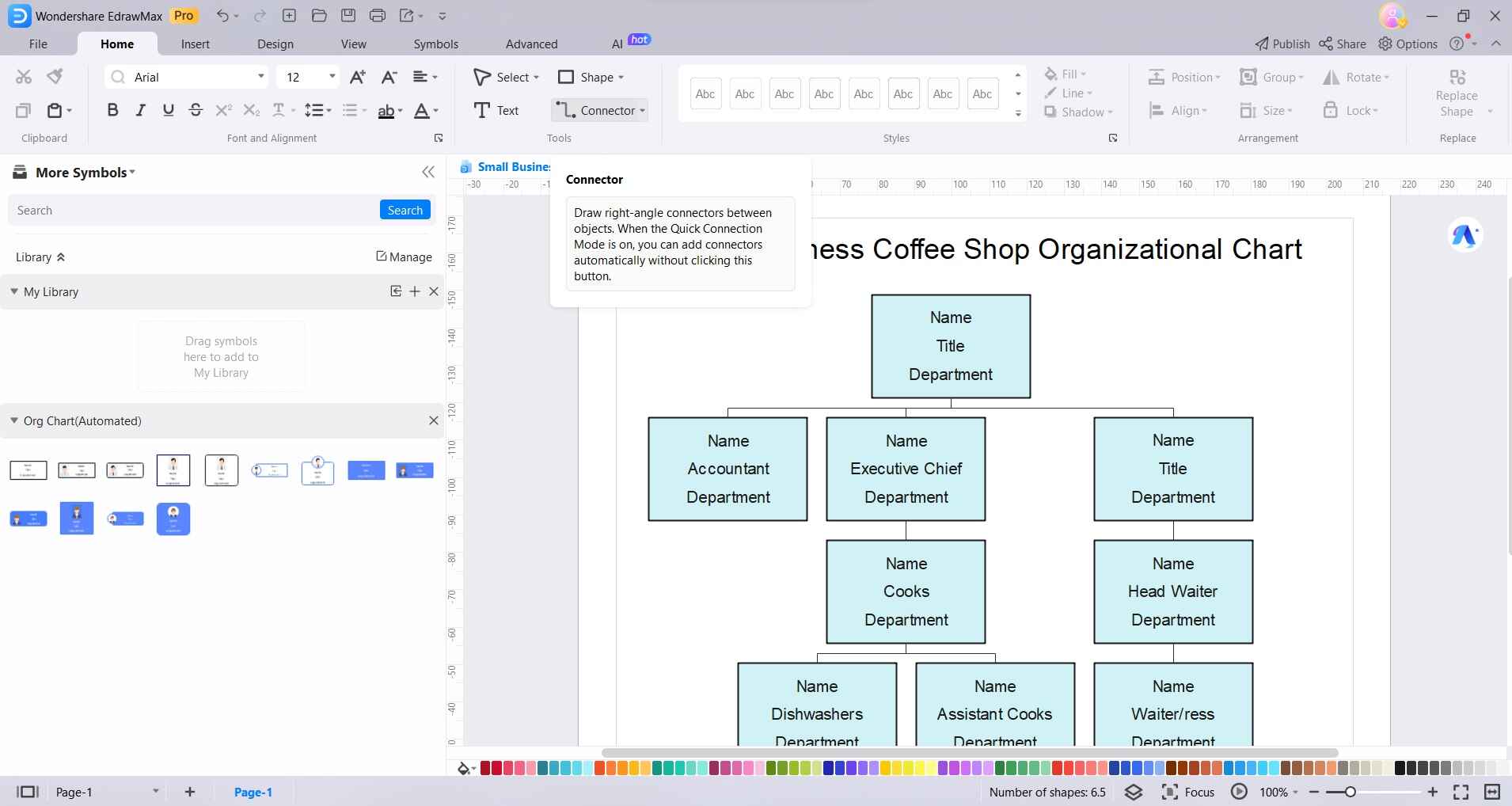
Step 4: If your coffee shop has different departments (e.g., Front of House, Back of House), add separate sections in the organizational chart to represent them.
Step 5: Use EdrawMax's formatting options to enhance the visual appeal of your organizational chart. Customize shapes, lines, and text colors to make the chart easy to read and visually appealing. You can also adjust the size and spacing of the elements to create a balanced layout.
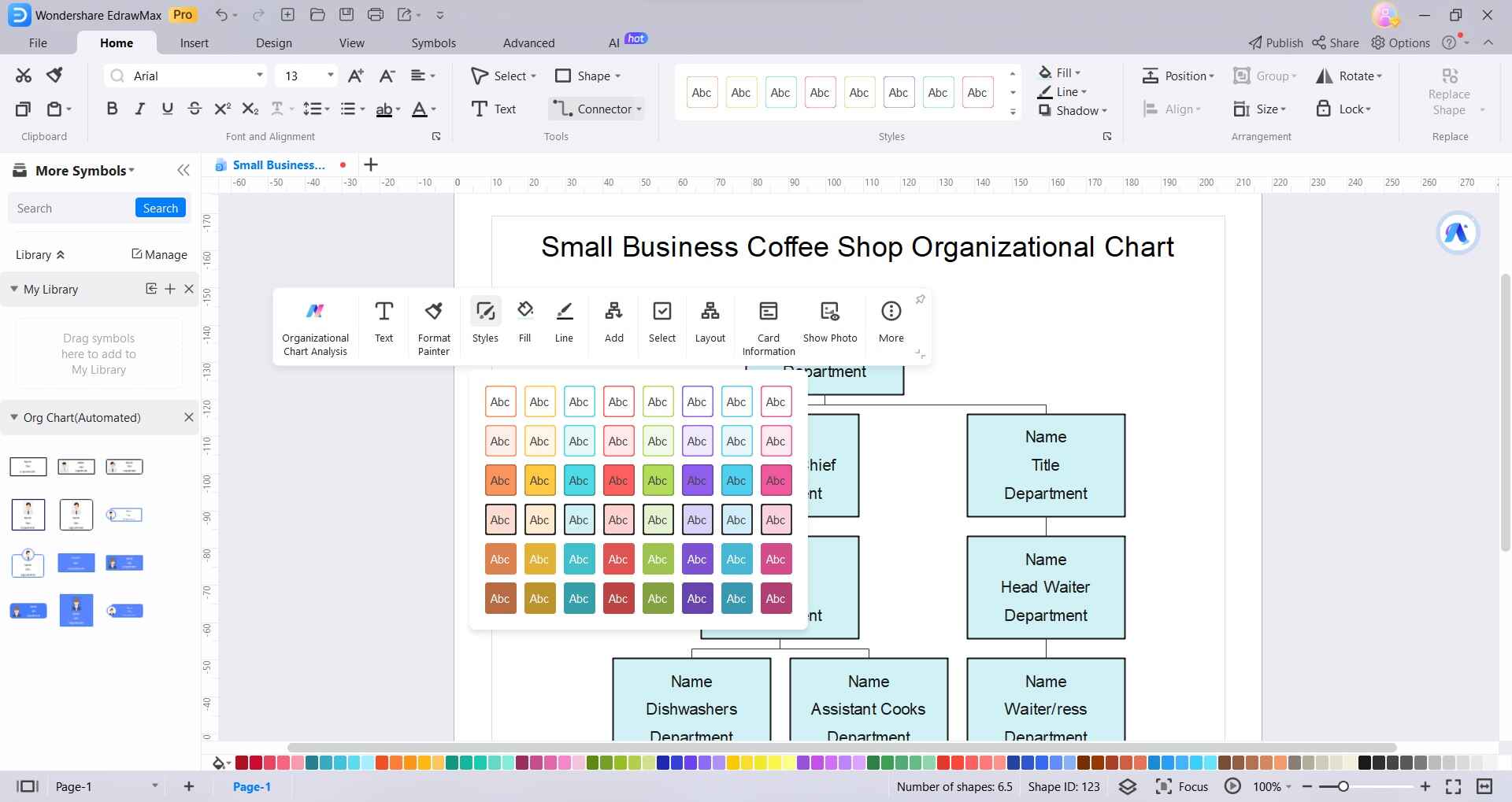
Step 6: Once you're satisfied with the organizational chart, save it in a format that works for you (e.g., PDF, PNG) and share it with your team.
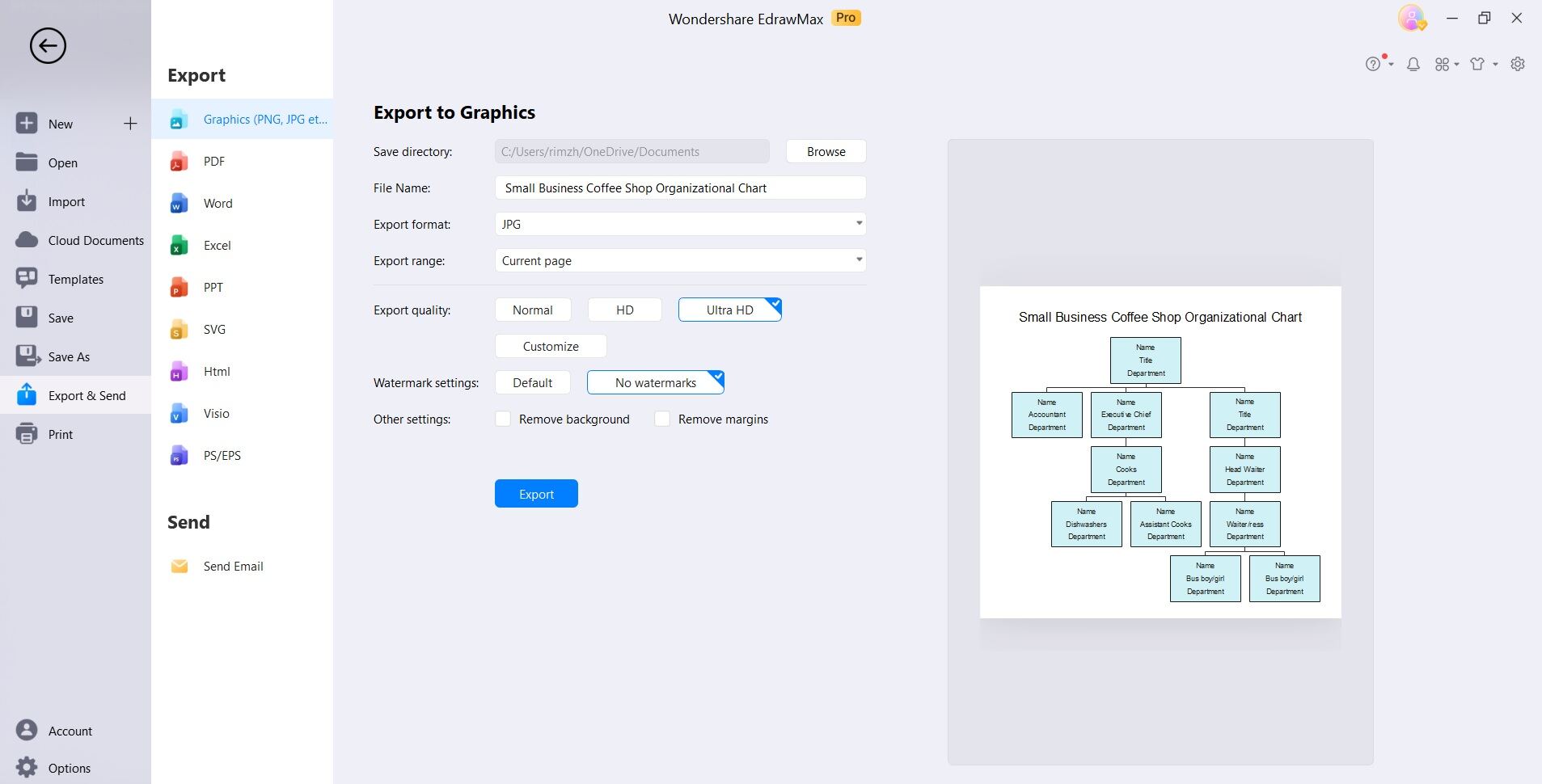
Remember, EdrawMax provides a range of tools and features to make this process smooth and efficient. Experiment with different templates and customization options until you have a clear and accurate representation of your coffee shop's organizational structure.
Conclusion
Designing an effective organizational structure is the cornerstone of a thriving coffee shop. It provides clarity, enhances communication, and ensures each member knows their role. Factors like size, staff numbers, services offered, and target market all play pivotal roles.
By leveraging tools like EdrawMax, owners can craft a structure that aligns with their business goals. This blueprint sets the stage for a well-coordinated team, ultimately translating into exceptional customer experiences and long-term success in the competitive coffee industry.




